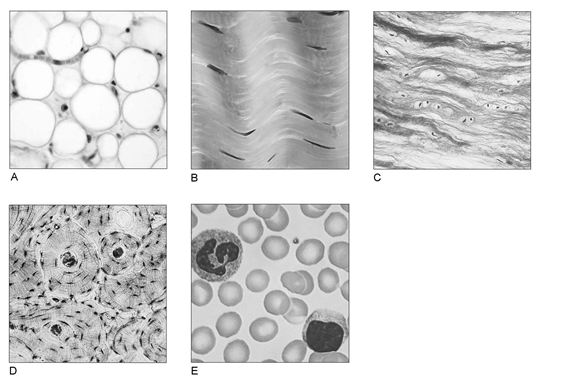A decrease in peripheral vein diameter is called
A) vasoconstriction.
B) venoconstriction.
C) vasodilation.
D) viscosity.
E) peripheral resistance.
B) venoconstriction.
You might also like to view...
Generally, how do sensory neurons encode stimulus intensity? What is the dynamic range of a sensory neuron? How does range fractionation improve the dynamic range?
What will be an ideal response?
Using Figure 4.1, match the following:

1) Supports and protects; stores calcium.
2) Forms tendons and ligaments.
3) Supports and protects; insulates against heat loss; reserve source of fuel.
4) Provides tensile strength with the ability to absorb compressive shock.
5) Composed of cells in a fluid matrix.
The amount of glomerular filtrate produced in 1 day is approximately:
a. 180 liters b. 18 liters c. 8 liters d. 1.8 liters
Which atom is a major player in the production of energy from nutrient molecules?
A. Hydrogen B. Nitrogen C. Carbon D. Oxygen